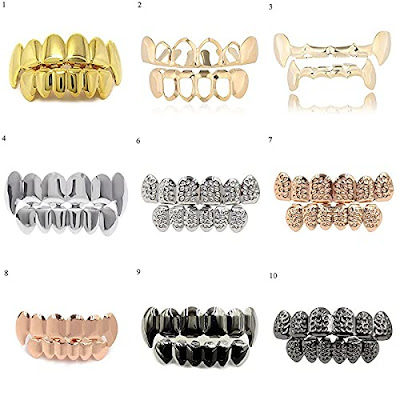You’ve heard of grills used for barbecues, cars, and even bars and grills. But what about dental grills? You’ve probably seen them, and noticed that they’re popular, and very shiny. Some may wonder if there’s a way for you to get them.
Currently, the ADA says that there aren’t any studies that say that these are harmful, but there aren’t any studies that also prove that these are safe as well.
If you’re thinking of adding these to your mouth as a pretty accessory, here’s what we know about grills, and whether they’re the correct choice for you.
What are they?
They’re known as grills, and they’re shared a lot. They came into pop culture because athletes and hip hop artists started to wear them on their social media posts.
They’re usually removable for the most part, but some of them are permanent.
However, they usually include the following:
Are made from silver or gold and have jewels encrusted in them.
They get fitted over one tooth, or over multiple kinds of teeth
Sometimes some people may mistake a crow for a grille due to the silver colors
They’re actually made by dentists
You can actually get these online or at a jewelers too if you want something cheaper, and a better option for DIY usage.
The Risks of Grills
There are a few risks of grills that you should be mindful of.
The first is the bacteria, debris, and the food getting trapped in between the grill and the teeth. This causes tooth decay, gum issues, and your breath gets bad
They do have a glue that goes on these in order to attach them. This glue actually can harm the gums and the teeth in some cases depending on the formula.
There is the risk of abrasion that comes with this, as they do scrape the enamel that’s there off of your teeth, and this can put the teeth at risk for dental decay, along with sensitivity
Some grills are made with metals and other alloys that can be quite problematic if you’re allergic to this.
It can also impact the way that you speak and chew, as they may be placed within the incorrect position, affecting the state of things.
Caring for a grill
If you plan to get a grill, here are some tips to make sure that the mouth and the grills are healthy and clean, and so that they last a long period of time.
First, if you’re going to wear a grill, remove this before you clean your teeth, or eat something.
Make sure that you keep up with your oral habits as they can help to get rid of the food and the plaque that’s there.
Clean up the grill itself on the daily so that debris and bacteria are removed
Wear the grill only a little bit, and don’t wear this all the time. It can impact the health of the teeth in a lot of cases as you start to wear this more often.
If you have an allergic reaction to the grill, or if you have some issues with the materials, talk to your dentist before you make sure that you use these, so that you don’t cause further problems.
Remember, while it’s trendy, there are issues with grills and wearing them. Keep them in mind when you decide to wear them and talk to your dentist before investing in a grill for your teeth, so that it helps keep your smile a lot longer, and also makes you look better too.










